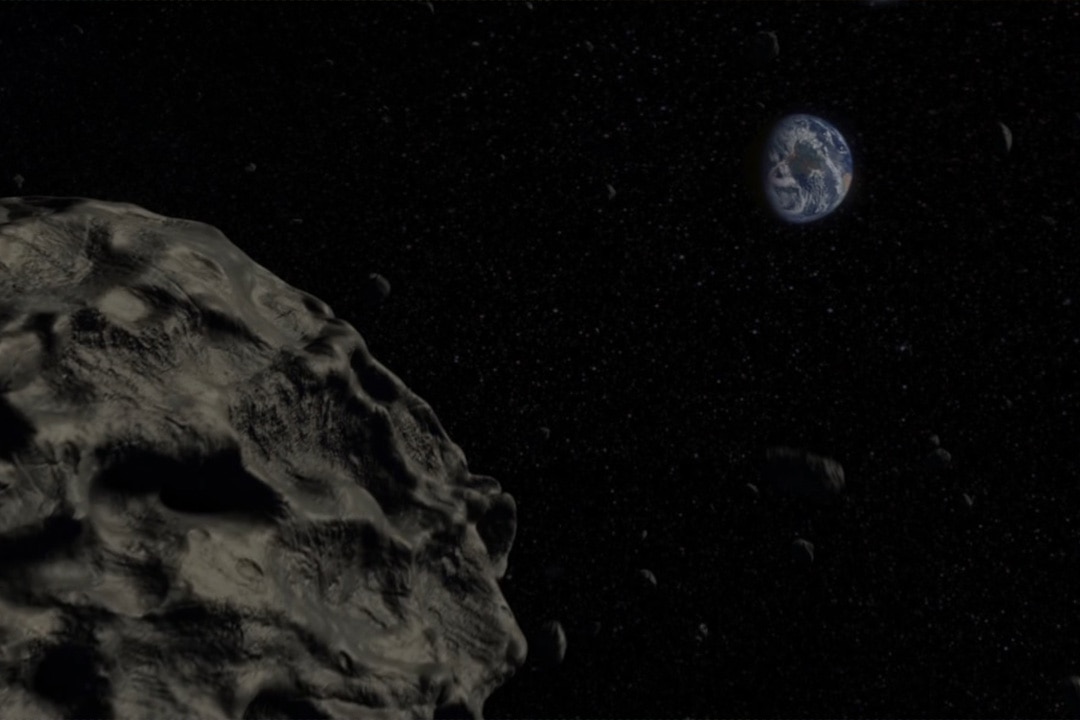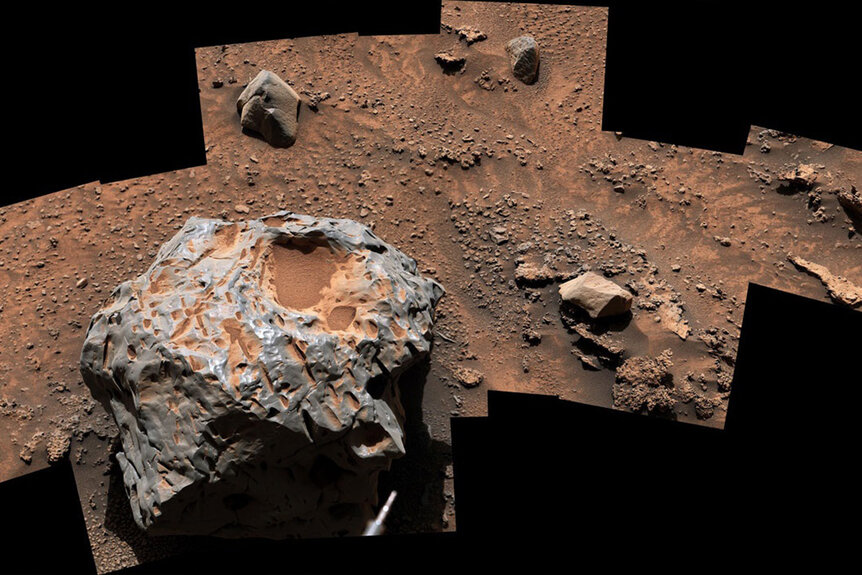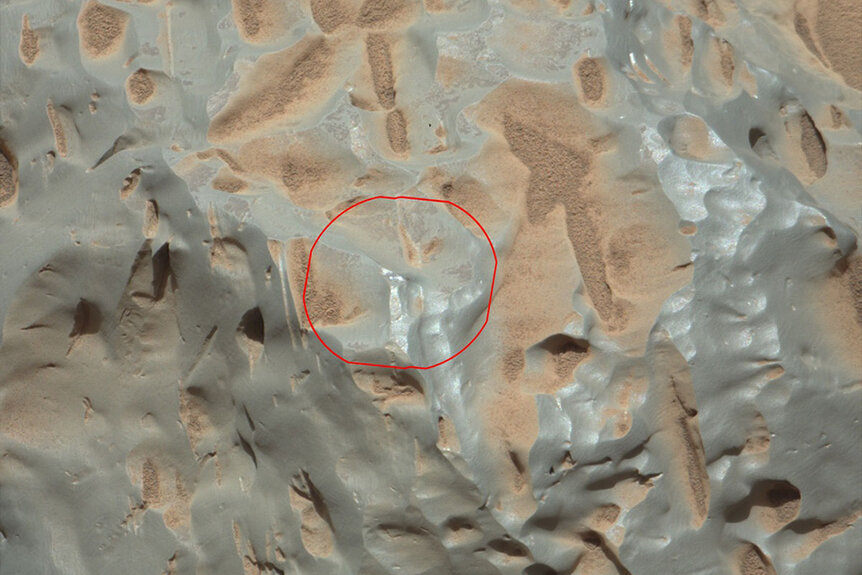Create a free profile to get unlimited access to exclusive videos, sweepstakes, and more!
The Curiosity rover just found an alien metal meteorite on Mars
Between searching for alien microbes, Curiosity took a moment to blast a Martian meteorite.

In the 2014 science fiction movie Asteroid vs. Earth (now streaming on Peacock!), world leaders discover a wave of asteroids on a collision course with Earth. It’s a scenario we’ve seen before, but the brave heroes of this movie dare to attempt what no one has ever even considered before. With the planet and the impactors growing ever closer, a team of Earth’s bravest and smartest people come up with a plan so wild it couldn’t possibly work. Unless it must. If they can’t move the asteroids out of the way, then they’ll move the planet instead.
That might work for Earth (we know "might" is doing a lot of heavy lifting) but Mars doesn’t have a crack team of heroes to step up in its hour of need. If a big rock comes spiraling in from out of the deep, there’s nothing for Mars to do but brace for impact and wait for our robots to stumble upon the wreckage.
According to a recent statement from NASA, one lucky meteorite’s wait is finally over. On Jan. 28, the 3,725th sol (Martian day) of Curiosity’s mission, the SUV-sized robot photographed a relatively large metal meteorite dubbed Cacao. The meteorite was discovered in a sulfate-bearing region on Mars’ Mount Sharp, the central peak inside Gale Crater, part of Curiosity’s exploratory domain.
RELATED: Does that taste like aliens? Salt on Mars could determine if life ever existed there
Cacao is estimated to be about a foot in diameter (30 centimeters), based on images captured with Curiosity’s Mast Camera. Nineteen images were taken in total and later stitched together into a panoramic view of the meteorite and the surrounding landscape. The images are mostly unchanged, save for color correction to make them easier to interpret. That’s because objects on Mars are viewed through a much thinner atmosphere comprised almost entirely of carbon dioxide, and at a considerably longer distance from the Sun. It’s like trying to see clearly in a poorly lit haunted house; things don’t look right. So, images are color corrected to more closely resemble the way they might look if a human observer were seeing the same landscape under Earthly skies.
Even at first glance it’s clear that Cacao is different from the surrounding rocks. It’s a comparatively large piece of silver gray material in an otherwise rust-colored terrain. What’s more, the other rocks nearby are largely sanded smooth while Cacao has characteristic pockmarks on its surface. Those marks are likely a fingerprint of the meteorite’s short but violent trip through the thin Martian atmosphere.
While studying meteorites isn’t Curiosity’s primary mission — it was sent to determine if Mars might ever have been hospitable to microbial life — it still made time for a quick pit stop to do a little analysis. If you look closely at the photos, you’ll see five small marks caused by one of Curiosity’s onboard laser instruments.
RELATED: Astronomers find the face of a cracked-out bear on the surface of Mars
Using the ChemCam, Curiosity focused on a small outcropping of rock and blasted it. The laser is so strong that it rapidly transforms pieces of whatever it targets into vapor. Curiosity can then analyze the vapor that forms to figure out what it’s made of.
At present, we don’t know much about Cacao’s story prior to arriving on Mars. We don’t know where it came from or how long it waited on the surface for Curiosity to find it, but we can make some educated guesses. Iron-nickel meteorites are relatively uncommon, accounting for only about 5% of recovered impactors and that’s probably because of how they are formed. It’s believed that most iron-nickel meteorites begin their lives inside small planetary bodies. Because metals like iron and nickel are comparatively heavy, they’ll sink into the core of an object over long enough timescales. Leaving even smallish planetary bodies with metal cores.
As the solar system continued to evolve, those failed planets were increasingly likely to come into contact with other large objects and break up, scattering their bits throughout the system. Some might be captured and fall into orbit around the Sun or a planet. Others are doomed to come to rest on an alien planet, where they can only hope to find themselves in the path of a robot passing through.
We prefer our meteorites, comets, and asteroids at a safe distance and our movies close to home. Check out Asteroid vs. Earth, streaming now on Peacock!




























